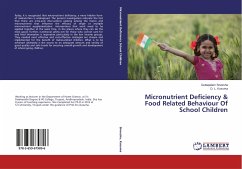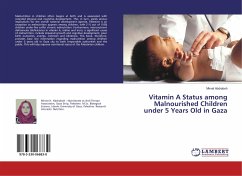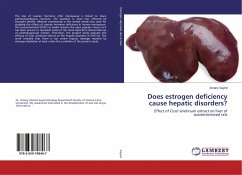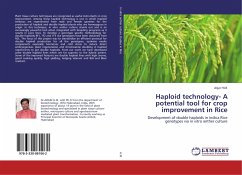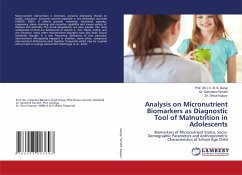
Analysis on Micronutrient Biomarkers as Diagnostic Tool of Malnutrition in Adolescents
Biomarkers of Micronutrient Status, Socio-Demographic Parameters and Anthropometric Characteristics of School Age Child
Versandkostenfrei!
Versandfertig in 6-10 Tagen
36,99 €
inkl. MwSt.

PAYBACK Punkte
18 °P sammeln!
Micronutrient malnutrition is extensive, presents distressing threats to health, education, economic growth especially in less developed countries (UNICEF, 2005). It affects growth, immunity; functional capacity; pregnancy, vision, learning and cognitive capability and causes variety of diseases and mortality. The at-risk populations are poor people. The most widespread of them are deficiencies of vitamin A, iron, folate, iodine, and zinc however, many other micronutrient disorders have also been found incidental though, in a low frequency. Deficiency of one particular micronutrient infrequent...
Micronutrient malnutrition is extensive, presents distressing threats to health, education, economic growth especially in less developed countries (UNICEF, 2005). It affects growth, immunity; functional capacity; pregnancy, vision, learning and cognitive capability and causes variety of diseases and mortality. The at-risk populations are poor people. The most widespread of them are deficiencies of vitamin A, iron, folate, iodine, and zinc however, many other micronutrient disorders have also been found incidental though, in a low frequency. Deficiency of one particular micronutrient infrequently happens in isolation; more often, compound micronutrient deficiencies exist together frequently which may be coupled with protein or energy malnutrition (Muthayya et al., 2013).



